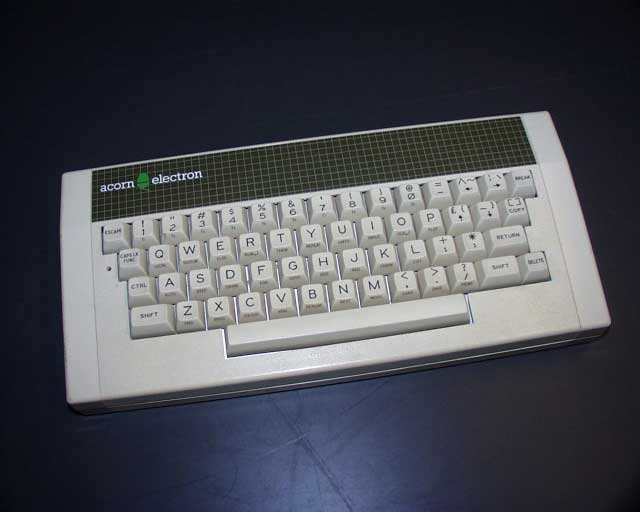The Acorn Electron is basically a cut-down version of the Acorn BBC-B
whith which it is partly compatible.
After the success of the BBC, Acorn and founder Chris Cury, wanted a
product to compete with "under £200" computers and especially with the
Sinclair Spectrum, its main threat.
But sadly, Acorn failed to meet the demand for the new system, mainly
because of production problems related to the large custom ULA which is
the heart of the Electron.
The next year (1984), Acorn decided to anticipate all these problems and
focused on producing vast numbers of Electron.
But unfortunately, public demand and enthusiasm was on the wane, and
despite an extensive £4-million advertising campaign, a third of the
Electrons that were built never made it on to the shelves, and behind them,
there were large stockpiles of components that had been paid for,
but remained unused.
Compared to the BBC and its large connectivity possibilities, the Electron
is quite basic with only one expansion port to play around.
Fortunately, Acorn will quickly release the Plus 1 expansion offering two ROM
cartridge slots, a parallel / centronics interface and a joystick connector.
The built-in Acorn Electron Basic, largely derived from the famous BBC Basic,
is impressive with innovative features such as the possibility to define
real procedures with DEF PROC and ENDPROC, or the handling of
error events (in 1983 !).
There is even an OLD statement wich recovers a program erased by NEW.
In the 32k ROM is also stored a complete assembler language.
The graphic possibilities are also quite impressive for a computer
of this category.
Text mode can go up to 80 columns, and high resolution up to 640 x 256
pixels with 2 colors.
The custom ULA developped especially for the Electron handles the video
display, the sound production and the I/O communications !
This is the real heart of the Electron.
The mechanical keyboard is really good.
Basic statements are written on most of the keys, which gives the
possibility to type them in one go.
A small red LED placed on the left part of the keyboard, indicates if you
are in lowercase or uppercase mode.
Even if it is more powerful than the ZX Spectrum, the Electron didn't sell
well and suffered to a certain lack of software...
(www.-old-computers.com)
|


